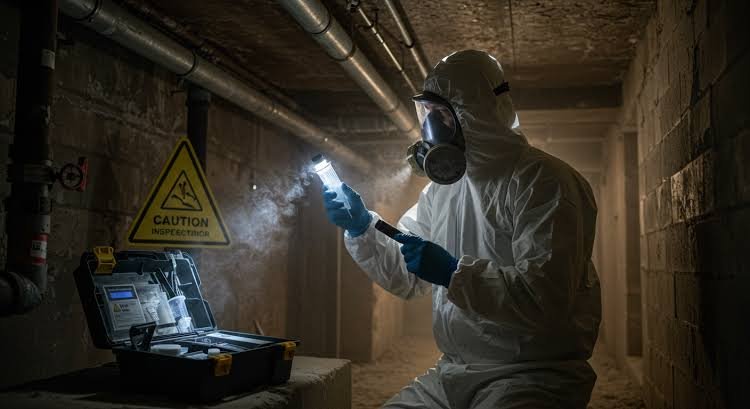Blog
Asbestlint: Understanding Risks, Safety Measures & Professional

Asbestlint is a hazardous fiber-based material once widely used in construction and manufacturing. Although its use has been heavily restricted or banned in many countries, it still poses significant risks when found in older buildings and industrial settings. This guide explores the dangers of asbestlint, ways to identify it, protective measures to follow, and best practices for safe removal.
What is Asbestlint?
Asbestlint refers to a form of asbestos fiber that becomes airborne when disturbed. Once inhaled, these microscopic fibers can lodge in the lungs, leading to serious health conditions over time. Historically, it was valued for its heat resistance, durability, and insulating properties. However, medical studies have revealed its severe health hazards, prompting global efforts to eliminate its use.
Historical Use of Asbestlint
During the 20th century, asbestlint was commonly used in:
- Roofing and siding materials
- Thermal insulation for pipes and boilers
- Floor tiles and adhesives
- Fireproof fabrics and protective clothing
The popularity stemmed from its fire resistance, affordability, and ease of integration into building materials. Unfortunately, these benefits came at the cost of long-term health impacts.
Why Asbestlint is Dangerous
When intact, asbestlint is not immediately harmful. Problems arise when it is damaged, cut, or disturbed. The fibers can float in the air for hours, increasing the likelihood of inhalation. Once inside the body, they can cause:
- Asbestosis – A chronic lung disease causing scarring and breathing difficulties
- Mesothelioma – A rare but aggressive cancer of the lung or abdominal lining
- Lung Cancer – Increased risk, especially among smokers
The latency period for these illnesses can be decades, meaning early exposure might not show symptoms for many years.
How to Identify Asbestlint in Your Property
Identifying asbestlint is challenging because it often looks similar to other building materials. Common indicators include:
- Age of the building – Properties built before the 1980s are more likely to contain it.
- Material texture – It often appears as fibrous, fluffy insulation or embedded in cement sheets.
- Location – Found in attics, old HVAC systems, floor tiles, and behind wall panels.
However, the only reliable confirmation comes from laboratory testing.
Safe Handling of Suspected Asbestlint
If you suspect asbestlint is present:
- Do not touch or disturb it
- Restrict access to the area
- Turn off ventilation systems to prevent fiber spread
- Call a certified asbestos inspector for testing
Even minor contact can release harmful fibers, so personal testing is never recommended.
Professional Removal Process
Removing asbestlint should only be done by licensed professionals. The standard process includes:
- Inspection and testing – Confirming asbestos content
- Containment setup – Sealing off the area with plastic sheeting and negative air pressure
- Protective equipment – Workers wear respirators, gloves, and disposable suits
- Careful removal – Materials are wet down to prevent dust release
- Safe disposal – Transported in sealed containers to authorized hazardous waste facilities
Improper removal not only endangers health but may also violate environmental regulations.
Legal Regulations on Asbestlint
Most countries have strict guidelines for asbestos management. For example:
- United States – Regulated by OSHA, EPA, and state agencies
- United Kingdom – Controlled under the Control of Asbestos Regulations 2012
- Australia – Complete ban on manufacturing and use since 2003
Failure to comply can result in heavy fines and criminal charges.
DIY Removal: Why It’s a Bad Idea
While some property owners consider removing asbestlint themselves to save money, the risks far outweigh the benefits. Without proper training, equipment, and disposal methods, fibers can contaminate your home and put you and your family at risk.
Preventing Exposure in Older Buildings
Prevention is key when dealing with asbestlint. Steps include:
- Scheduling annual inspections for older properties
- Encapsulating rather than removing stable asbestos-containing materials
- Using HEPA filters in HVAC systems
- Educating occupants about potential risks
Asbestlint in Industrial Settings
Industrial facilities built before the asbestos bans often still contain asbestlint in machinery insulation, piping, and storage tanks. Employers must implement strict safety protocols, including:
- Regular air quality monitoring
- Employee training on asbestos safety
- Immediate reporting of damaged insulation
Health Monitoring After Exposure
If you’ve been exposed to asbestlint, regular medical checkups are crucial. Doctors may recommend:
- Lung function tests
- Chest X-rays or CT scans
- Smoking cessation programs to reduce cancer risk
Myths and Misconceptions about Asbestlint
Some common myths include:
- “Asbestlint is only dangerous if you work in construction” – False. Any exposure can be harmful.
- “It’s safe once painted over” – Painting can temporarily seal fibers, but damage still poses risks.
- “Removal is optional” – In many cases, legal compliance makes removal mandatory.
Environmental Impact of Asbestlint
Beyond human health, improper disposal of asbestlint contaminates soil and water. Once fibers enter the environment, they do not break down, posing risks to wildlife and ecosystems.
Cost of Professional Asbestlint Removal
The price varies depending on contamination size, location, and local regulations. On average, residential removal ranges from $1,200 to $3,500, while large industrial projects can cost significantly more.
Key Takeaways on Asbestlint Safety
- Never attempt removal yourself.
- Always hire certified professionals.
- Regular inspections help prevent accidental exposure.
- Follow all legal disposal requirements.
FAQs About Asbestlint
Q1: What is asbestlint made of?
It consists of microscopic asbestos fibers derived from natural silicate minerals.
Q2: Is all insulation from before 1980 dangerous?
Not necessarily, but any suspect material should be tested.
Q3: Can I test for asbestlint myself?
No, self-testing increases exposure risk. Always hire professionals.
Q4: How long do health effects take to appear?
Symptoms can take 10–40 years to develop.
Q5: Is there a safe level of exposure?
No, even minimal exposure can be harmful.
Q6: Can asbestlint be recycled?
No, it must be safely contained and disposed of in approved facilities.
Conclusion:
Asbestlint remains one of the most hazardous materials in construction history. While its dangers are well-documented, many older properties still contain it. Through awareness, prevention, and professional intervention, exposure risks can be minimized, ensuring safer homes and workplaces for everyone.
-

 Blog2 months ago
Blog2 months agoKate Garraway’s New Partner 2024: A Fresh Chapter Begins
-

 Health2 months ago
Health2 months agoCandizi – The Ultimate Game-Changer in Wellness and Lifestyle
-

 Food2 months ago
Food2 months agoCalamariere: A Tasty Seafood Delight That Shines
-

 Blog2 months ago
Blog2 months agoUnited Airlines Flight UA770 Emergency Diversion
-

 Blog2 months ago
Blog2 months agoTractor Supply Sales Associate Job Description (2025 Update)
-

 Blog2 months ago
Blog2 months agoPowerful 7-Step Guide to هنتاوي com: Boost Organic Traffic Now
-

 Culture2 months ago
Culture2 months agoHis Majesty NWBKA: A Symbol of Royalty, Culture, and Legacy
-

 digital marketing2 months ago
digital marketing2 months agoSalt Lake City Videography Services That Bring Your Vision to Life
